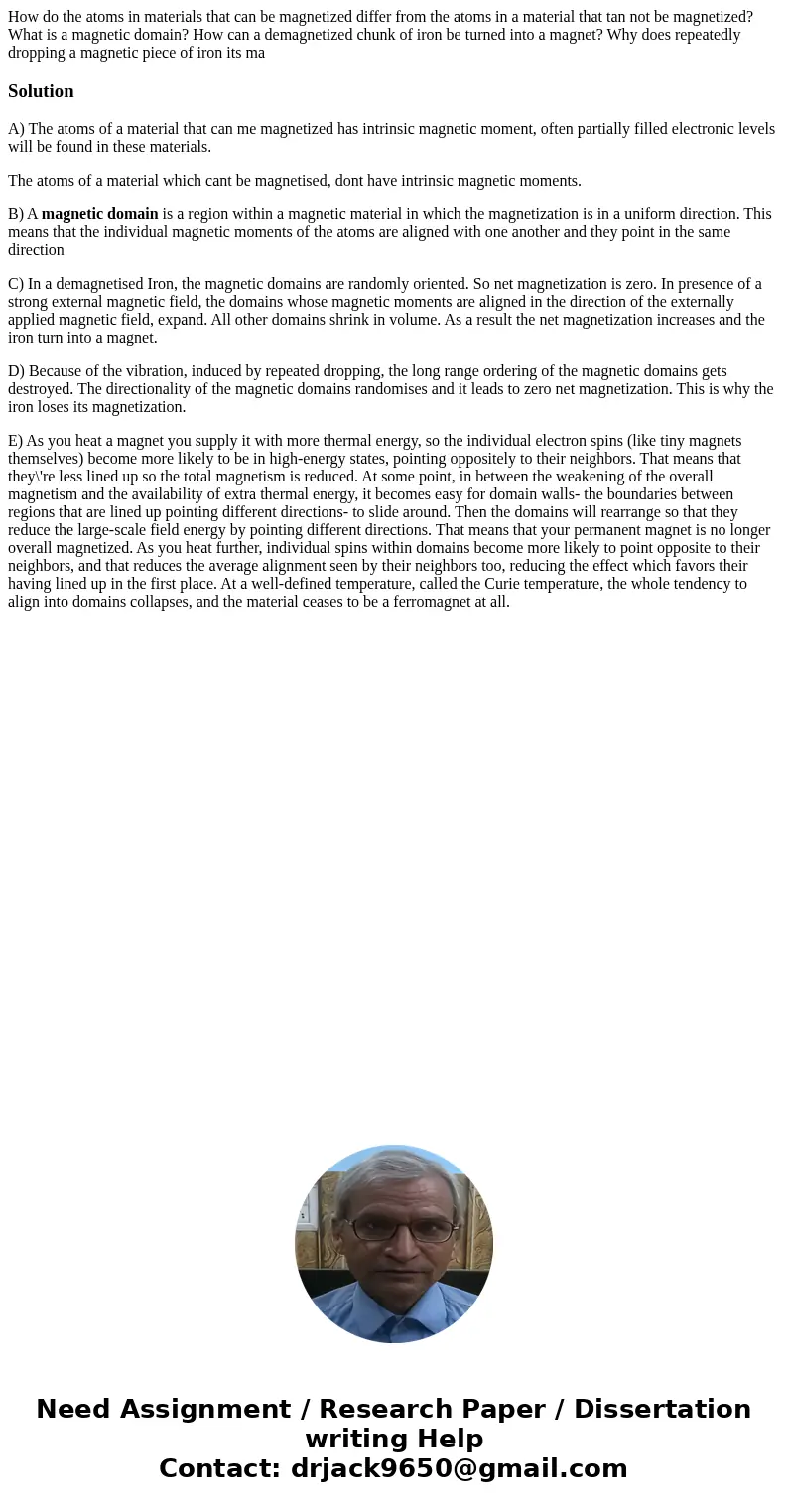How do the atoms in materials that can be magnetized differ
Solution
A) The atoms of a material that can me magnetized has intrinsic magnetic moment, often partially filled electronic levels will be found in these materials.
The atoms of a material which cant be magnetised, dont have intrinsic magnetic moments.
B) A magnetic domain is a region within a magnetic material in which the magnetization is in a uniform direction. This means that the individual magnetic moments of the atoms are aligned with one another and they point in the same direction
C) In a demagnetised Iron, the magnetic domains are randomly oriented. So net magnetization is zero. In presence of a strong external magnetic field, the domains whose magnetic moments are aligned in the direction of the externally applied magnetic field, expand. All other domains shrink in volume. As a result the net magnetization increases and the iron turn into a magnet.
D) Because of the vibration, induced by repeated dropping, the long range ordering of the magnetic domains gets destroyed. The directionality of the magnetic domains randomises and it leads to zero net magnetization. This is why the iron loses its magnetization.
E) As you heat a magnet you supply it with more thermal energy, so the individual electron spins (like tiny magnets themselves) become more likely to be in high-energy states, pointing oppositely to their neighbors. That means that they\'re less lined up so the total magnetism is reduced. At some point, in between the weakening of the overall magnetism and the availability of extra thermal energy, it becomes easy for domain walls- the boundaries between regions that are lined up pointing different directions- to slide around. Then the domains will rearrange so that they reduce the large-scale field energy by pointing different directions. That means that your permanent magnet is no longer overall magnetized. As you heat further, individual spins within domains become more likely to point opposite to their neighbors, and that reduces the average alignment seen by their neighbors too, reducing the effect which favors their having lined up in the first place. At a well-defined temperature, called the Curie temperature, the whole tendency to align into domains collapses, and the material ceases to be a ferromagnet at all.

 Homework Sourse
Homework Sourse